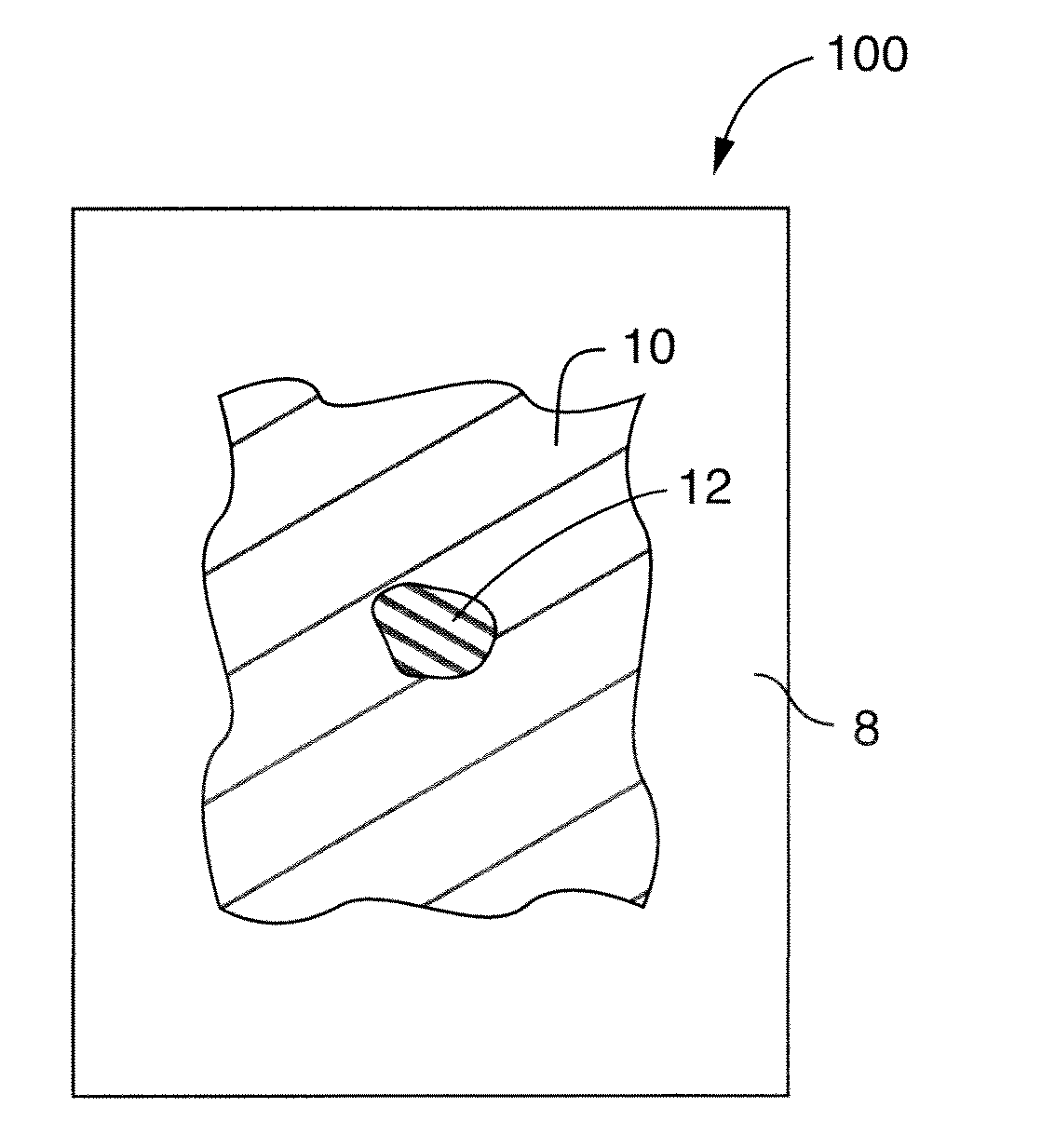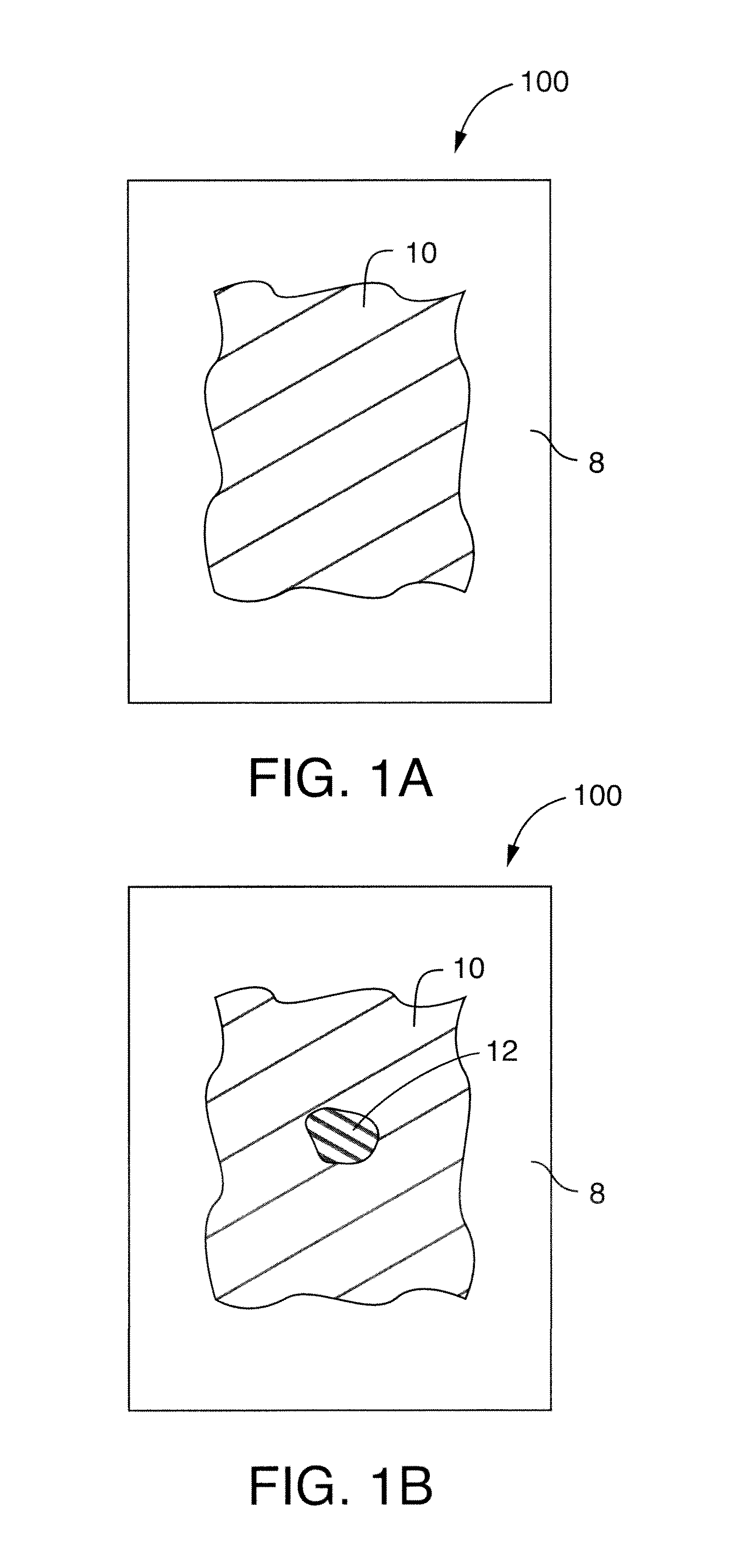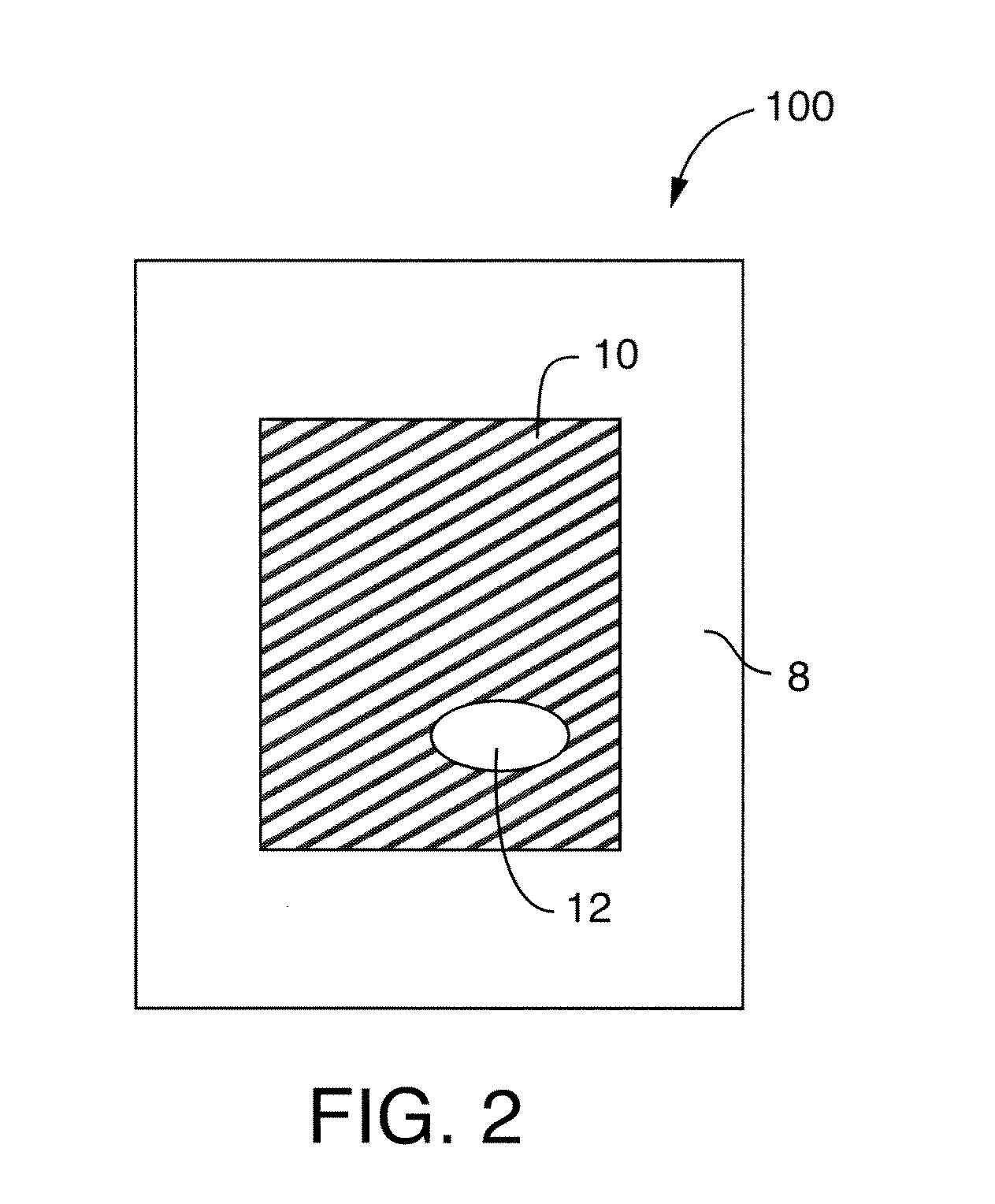Wetness Indicator Having Varied Hues
a wetness indicator and hue technology, applied in the field of sensors, can solve the problems of wearers not being aware of urination control failures or the need to change the absorbent article, caregivers not being aware that the absorbent article needs to be changed, wearers may not realize they have urinated,
- Summary
- Abstract
- Description
- Claims
- Application Information
AI Technical Summary
Benefits of technology
Problems solved by technology
Method used
Image
Examples
example 1
[0095]Solution a was mixed with the Betaine solution and the Bromothymol Blue in 25:40:20 ratios. The solution was then coated with a pipette tip onto a polypropylene film. After the coating was dried, the film was yellow. Once a drop of water was put on top of the film, the water spot immediately changed to blue. The blue color was completely immobilized on the film, therefore no leaching was detected.
example 2
[0096]Solution A was mixed with the Betaine solution and the Methyl Red in 25:40:4 ratios. The solution was then coated with a pipette tip onto the polypropylene film. After the coating was dried, the film was pink-red. Once a drop of water was put on top of the film, the water spot immediately changed to purple-blue. The purple-blue dye was completely immobilized on the film, therefore no leaching was detected.
example 3
[0097]Solution A was mixed with the Betaine solution and the Malachite Green in 25:40:5 ratios. The solution was then coated with a pipette tip onto the polypropylene film. After the coating was dried, the film was light green. Once a drop of water was put on top of the film the water spot immediately changed to blue. The blue dye was completely immobilized on the film, therefore no leaching was detected.
PUM
 Login to View More
Login to View More Abstract
Description
Claims
Application Information
 Login to View More
Login to View More - R&D
- Intellectual Property
- Life Sciences
- Materials
- Tech Scout
- Unparalleled Data Quality
- Higher Quality Content
- 60% Fewer Hallucinations
Browse by: Latest US Patents, China's latest patents, Technical Efficacy Thesaurus, Application Domain, Technology Topic, Popular Technical Reports.
© 2025 PatSnap. All rights reserved.Legal|Privacy policy|Modern Slavery Act Transparency Statement|Sitemap|About US| Contact US: help@patsnap.com



